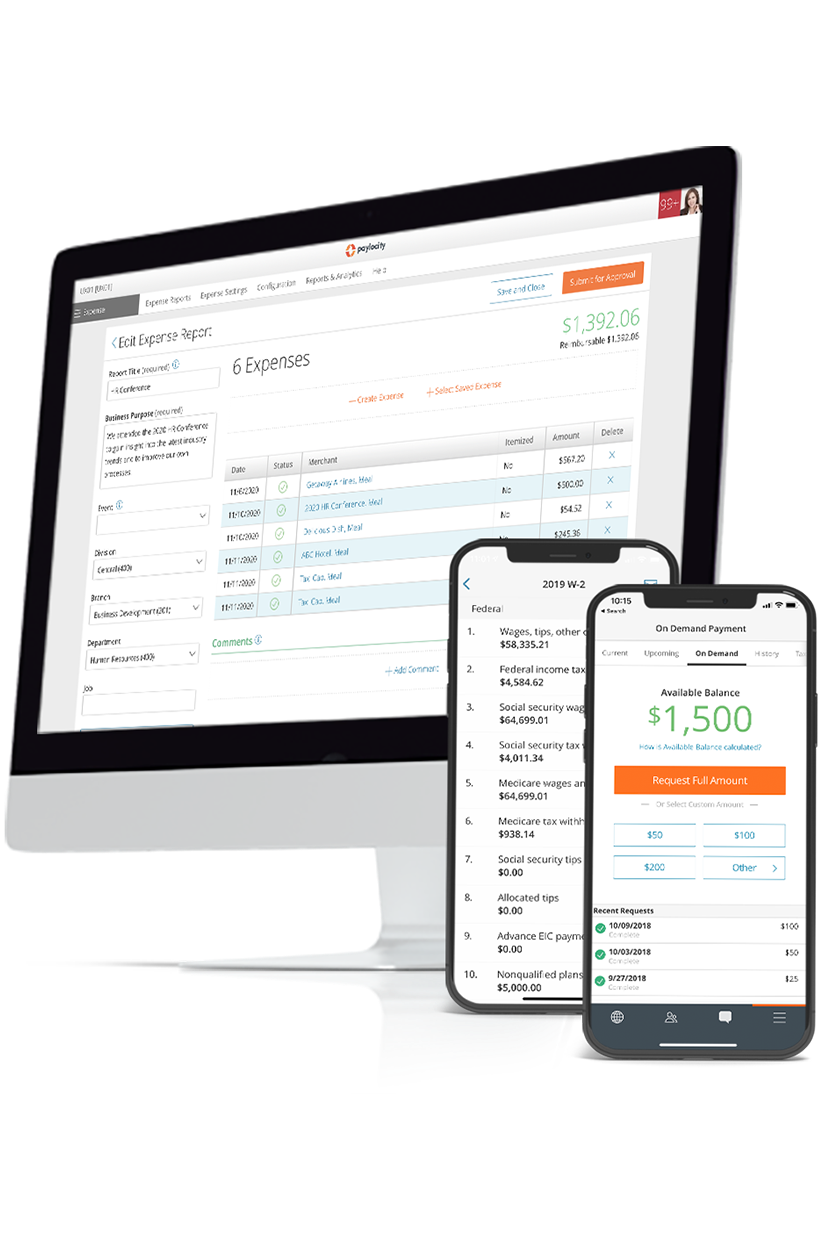resources
An Introduction to Payroll Administration
June 21, 2024
From tax compliance to policy changes, payroll administration is more than just distributing wages. It’s the backbone of every payroll experience.

When you hear “payroll administration,” what comes to mind? Processing expenses, calculating taxes, or distributing paychecks? While those are obviously part of it, they don’t capture the whole picture.
Payroll administration goes beyond processing payroll each pay period. It involves managing payroll policies, helping with government audits, and keeping up with changes in labor laws. Moreover, the role of a payroll administrator varies greatly based on an organization’s situation.
For these reasons, the following guide will explore what payroll administration covers, why it’s important, and different ways to manage it all.
Key Takeaways
- Payroll administration is a set of tasks, roles, and components that focus on maintaining or improving the legal compliance and logistics of an organization’s payroll system.
- Payroll administrators can have different duties depending on the size and nature of their employer, most of which go beyond completing the payroll process each pay period.
- Employers can also choose to manage payroll administration internally with a team of payroll administrators or externally by working with a payroll service provider or professional employer organization (PEO).
What is Payroll Administration?
Payroll administration is the practice of coordinating and supervising an organization’s payroll policies, processes, and compliance. It includes a slew of logistical and legal responsibilities intended to ensure employees are paid accurately, transparently, and on time. These can range from calculating an employee’s gross pay to filing annual tax forms to supervising recordkeeping requirements.
How an organization assigns these roles and tasks varies based on that organization’s size and nature. For example, larger companies may have the resources to employ several specialists each focusing on a specific administrative area. Smaller companies, on the other hand, may rely on a couple generalized administrators — or outsource payroll administration altogether.
What is the Role of a Payroll Administrator?
Payroll administrator responsibilities can vary, but the core goals usually include guaranteeing smooth and compliant payroll processes, helping resolve wage issues or errors, and educating everyone about payroll policy or legislative changes.
Due to the impact of those goals, payroll administrators often must coordinate and collaborate with other departments across the company. This is especially true if payroll administrator duties at that organization include any of the following:
- Processing submitted expenses and reimbursements
- Adding and removing new hires and terminations from the payroll system
- Assisting with any government audits
- Filing and submitting tax forms and payments
- Preparing payroll reports for managerial review
The Importance of Salary and Payroll Administration
No matter how it's structured, payroll administration helps the organization avoid lawsuits and hefty fines by complying with federal, state, and local laws, like the Fair Labor Standards Act (FLSA).
Second, it fosters a positive relationship between the company, its employees, and the surrounding industry. Ensuring workers are paid correctly builds trust, which can boost employee engagement. This, in turn, improves employee performance and reduces turnover.
Finally, a solid payroll admin setup also makes payroll processes more efficient by giving employees multiple payment options such as direct deposits, paycards, or on-demand pay. That flexibility and convenience lets an employer better meet the needs of their workforce and streamline the final step of the payroll process.
Payroll Administration Components
An effective payroll admin program needs to have several components to function properly: 1) a firm grasp on applicable tax and labor laws, 2) a communications plan for informing employees, and 3) a secure, well-organized archive for recordkeeping.
But the most important component of any salary and payroll administration program is reliable, consistent payroll processing. The specific steps can vary between companies, but the most common tasks usually include:
- Recording, reviewing, and approving all hours worked
- Calculating gross pay, deductions, and net pay
- Submitting and disbursing payments to financial institutions and employees
- Remitting taxes and forms to government agencies
- Updating the organization’s general ledger
- Retaining all associated payroll and tax records
Learn More: How Does Payroll Processing Work?
How to Manage Payroll Administration
Payroll administration can seem overwhelming given its broad scope and serious implications. While larger companies might have the means to build and develop an internal payroll team, smaller ones may find it too expensive and risky.
For these smaller companies, partnering with a payroll service provider or professional employer organization (PEO) is often the best solution, both financially and logistically.
Software providers can automate several payroll administration tasks and streamline the rest with powerful tools and dedicated support. They also may have in-house compliance experts who stay on top of the latest laws and regulations.
PEOs, on the other hand, take over payroll admin and compliance altogether by entering into a co-employment agreement with the client company. While this alleviates a lot of the time and resource commitments that go into payroll administration, it’s also an added layer that can impact the company’s workplace culture.
Powerful Payroll Administration with Paylocity
Payroll administration protects the company from a litany of legal issues and penalties, all while ensuring its employees get paid properly. Equally important, it builds the trust with employees that’s necessary to maintain a productive, engaged workforce.
Having the best payroll software and administrative tools makes a world of difference. Paylocity helps payroll administrators with features like:
- Default configurations and overrides automate manual steps and ensure completeness of payroll data.
- Automatic payroll audits that act as safeguards and call out any unexpected data entry.
- Tax geolocation can audit each employee to ensure they’re set up to pay the correct taxes based on their location.
Request a demo today, and see just how much easier payroll administration can be with Paylocity.

Save Time with Stress-Free Payroll Solutions
Payroll doesn’t have to be complicated, but it does have to be right. Stay compliant, collect employee data, and streamline tax filing – all while putting time back in your day with our automated payroll software. With the assurance of an error-free workflow, you can get back to what matters most – your people. Learn how our modern solutions get you out of the tactical and back to focusing on the bigger picture.



